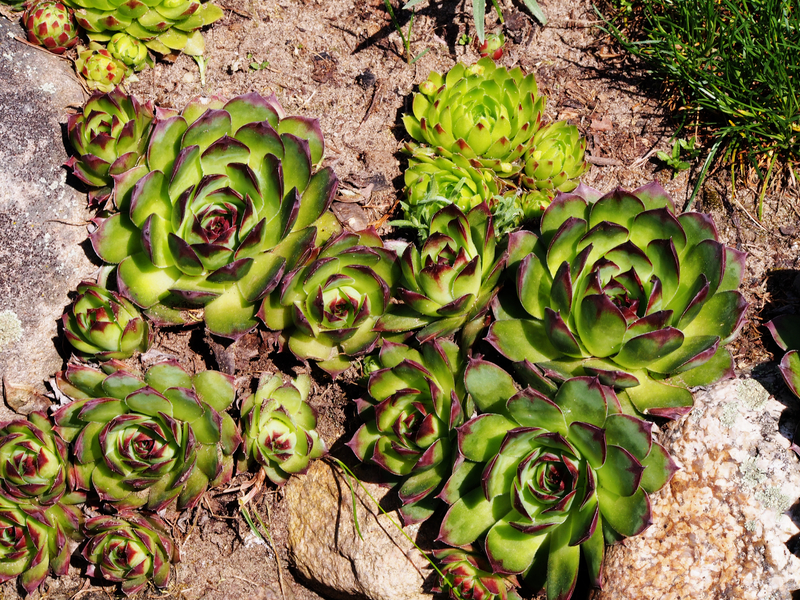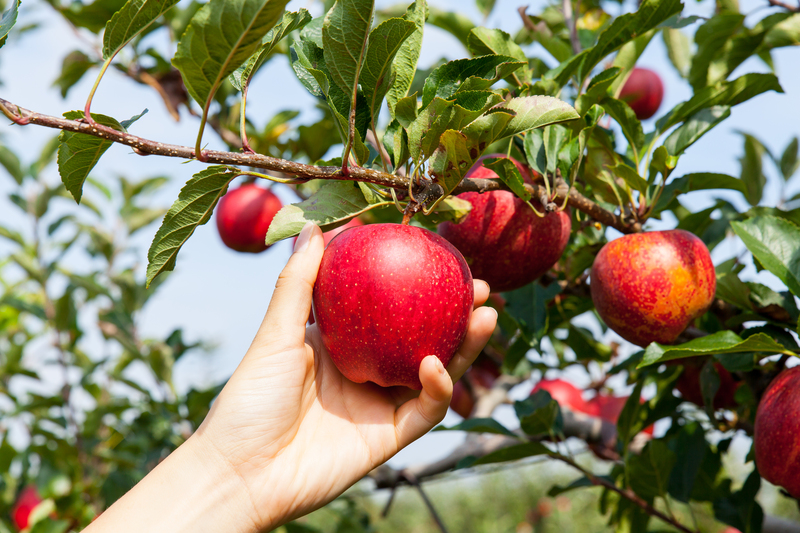Winter-Proofing Your Plants: Expert Tips
Posted on 24/05/2025
Winter-Proofing Your Plants: Expert Tips
As temperatures plummet and frost threatens, gardeners everywhere face the annual challenge of winter-proofing their plants. Whether you have a lush flower garden, a vegetable patch, or cherished container plants, harsh winter conditions can jeopardize your hard work. In this comprehensive guide, you'll discover essential strategies to protect your plants from winter's chill, as recommended by horticultural experts. Our expert tips ensure your beloved greens thrive and bloom beautifully when spring arrives.
Why Winter-Proofing Plants Matters
Winter brings with it not just low temperatures but also damaging winds, frost, and soil moisture loss. These factors can wreak havoc on both outdoor and indoor plants, causing stress or even death. Winterizing your plants is vital to:
- Prevent root damage caused by freezing soil temperatures
- Reduce moisture loss and desiccation from cold winds
- Stop frost heaving, which interrupts root stability
- Protect plant cells from bursting as water inside freezes
- Ensure earlier, healthier growth come springtime
Understanding the threats posed by winter allows for targeted prevention. Let's dig deeper into actionable ways to winter-proof your plants and safeguard your garden investment.

Know Your Plants: Assess Hardiness and Vulnerability
Before taking any protective measures, it's crucial to understand your plants' tolerance levels. Plant hardiness zones--as defined by the USDA or your country's gardening authorities--offer guidance on what survives locally. Consider the following:
- Annuals: Naturally die off in winter; remove or compost them.
- Perennials: Survive underground, but may need mulch protection over crowns and roots.
- Shrubs & Trees: Benefit from windbreaks, burlap wrapping, and special pruning.
- Evergreens: Particularly at risk of desiccation, require both moisture management and physical shielding.
- Container plants: Most susceptible--should be moved or heavily insulated.
Evaluate each plant's risks to tailor your winter protection strategy for the greatest success.
10 Expert Tips for Winter-Proofing Your Plants
Incorporate these proven winter protection techniques to keep your plants healthy and thriving through the cold months:
1. Mulching for Winter Insulation
One of the simplest and most efficient ways to protect plants in winter is by applying mulch. Mulch acts as a thermal blanket for roots, preventing sudden temperature fluctuations and locking in moisture.
- Apply 2-4 inches of organic mulch (straw, wood chips, shredded leaves) after the soil cools and before the ground freezes.
- Keep mulch away from stems and trunks to prevent rot.
- For tender perennials, make a "mulch mound" over crowns to protect from freeze-thaw cycles.
2. Watering Before Frost
Paradoxically, winterize your garden with a good, deep watering before heavy frosts arrive:
- Moist soil retains heat better than dry soil, reducing the depth of freezing.
- Hydrated plants are less prone to winter desiccation and cell damage.
- Water early in the day so foliage dries before nightfall to avoid ice formation.
3. Windbreaks and Burlap Wraps
Cold winter winds sap moisture and can physically damage plants. Installing windbreaks can significantly improve winter survival rates:
- Use stakes and burlap to create a fence around sensitive shrubs or young trees.
- Avoid plastic wraps, which trap moisture and promote rot.
- Temporary windbreaks may also protect roses, evergreens, and newly planted ornamentals.
4. Anti-Desiccant Sprays
When evergreen leaves lose too much moisture during winter, they brown and die. Horticultural anti-desiccant sprays form a protective film, locking in moisture:
- Apply on a mild, dry day during late autumn, ensuring leaves are clean and dry.
- Reapply mid-winter or after heavy precipitation, following product instructions.
5. Pruning for Plant Health and Structure
Proper pruning before winter fortifies plants against wind, snow, and ice:
- Remove dead, diseased, or crossing branches to minimize breakage under snow loads.
- Cut back vulnerable perennials and annuals, either to the ground or as suggested for the species.
- Don't prune spring-flowering shrubs (lilacs, azaleas) in fall; wait until after bloom next year.
6. Protecting Container Plants
Potted plants have little insulation from the elements and are highly vulnerable to root freeze:
- Move containers to an unheated shed, garage, or against a house wall for warmth.
- Wrap pots in bubble wrap, burlap, or old blankets for insulation.
- Group pots together for shared heat retention and additional frost protection.
- For ornamental containers, consider sinking pots into garden beds to insulate roots.
7. Safeguarding Tender & Exotic Plants
If your garden features tender perennials or exotics (palms, citrus, Mediterranean herbs), implement extra precautions:
- Dig up tubers (dahlias, cannas) and overwinter indoors in cool, dry, frost-free conditions.
- Use cloches or mini greenhouses for small, delicate plants.
- Cover with fleece or frost blankets on frosty nights, but remove during warmer spells to prevent mold.
8. Snow and Ice Management
Snow insulates, but too much weight can damage trees and shrubs:
- Gently brush off heavy snow from branches with a broom, moving upward and outward.
- Never attempt to remove ice--let it melt naturally to avoid breakage.
- Use stakes to prop up floppy branches or wrap with wide jute for support without constriction.
9. Monitoring for Pests and Disease
Winter doesn't eliminate garden pests--it simply changes their habits. Mice, voles, and insects may burrow into mulch or bark, feeding on vulnerable stems and roots.
- Use mesh guards or tree wraps to protect trunks from gnawing rodents.
- Inspect plants regularly for fungal issues under snow or mulch.
- Remove any mummified fruit or diseased plant debris from the ground.
10. Plan for Spring Recovery
Prepare now for a quick recovery when temperatures rise:
- Mark plant locations with stakes to avoid accidental disturbance before shoots emerge.
- Document which methods worked best so you can improve your winter protection plan next year.
- Begin removing insulation gradually after the last hard frost.
Common Winter-Proofing Myths (and the Real Truth)
- Myth: Snow always damages plants
Truth: A layer of snow can act as protective insulation, but heavy accumulations should be managed to prevent breakage. - Myth: All plants need to be covered during winter
Truth: Only the most vulnerable or tender species require full covering. Many native plants are adapted to local winters. - Myth: Less watering is better in winter
Truth: While water needs drop, deep watering before freezes helps protect roots by stabilizing soil temperatures and reducing desiccation. - Myth: Pruning in late fall is always best
Truth: Know your plant! Some species are best pruned after flowering, not before winter.
Regional Tips for Winterizing Plants
For Cold, Snowy Climates:
- Prioritize mulching and windbreaks for exposed gardens.
- Clear heavy snow from tree limbs promptly to avoid breakage.
- Choose native or hardy plant varieties where possible.
For Mild or Wet Winters:
- Focus on drainage to prevent root rot from saturated soils.
- Use lighter mulches or straw to avoid compacting crowns during wet spells.
- Monitor for slug and fungal threats in persistent damp.
For Mediterranean and Desert Regions:
- Protect from sporadic hard frosts using cloches or frost blankets.
- Reduce watering but never allow soil to become bone dry for evergreens.
- Container plants in exposed areas may require temporary relocation or wrapping.
Frequently Asked Questions About Winterizing Plants
When should I start winter-proofing my garden?
It's best to begin preparations in autumn, as soon as the weather cools and before the first hard freeze. This gives plants time to acclimate and ensures protective measures like mulching and wrapping are in place.
Can I use household materials for plant protection?
Absolutely! Old blankets, bed sheets, cardboard, and bubble wrap can all serve as effective barriers against frost. Just make sure supports are used, so covers don't crush delicate plants, and remove during milder spells to prevent trapped moisture and fungal issues.
Do indoor plants need winter-proofing?
Houseplants are not immune to winter woes. Move pots away from drafty windows and radiators, reduce watering slightly, and increase humidity indoors to combat dry air caused by central heating.
How do I know if my plants survived the winter?
Patiance is key! Wait until mid-spring to judge plant recovery. Many perennials and shrubs are late to leaf out, so don't be too quick to dig up what looks dead.

Final Thoughts: Set Your Garden Up for Winter Success
With a little planning and the right strategies, winter-proofing your plants becomes second nature. Pay attention to your plant types, local climate conditions, and apply expert tips for mulching, watering, wind protection, and more. Your reward will be glorious, healthy growth and colorful blooms each spring--proof that thoughtful gardening endures even the harshest winter.
Remember, the secret to successful winter plant protection is vigilance, adaptability, and learning from each season. Stay ahead of winter's icy grip, and your garden will thank you!

